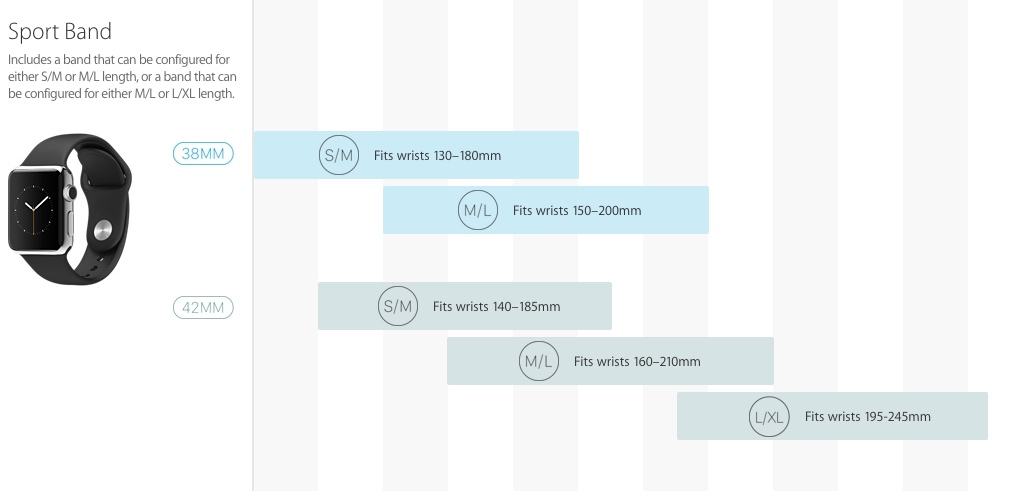Python stores details about capabilities which have been called in a call stack. When the function finishes executing, its stack body is discarded, and the move of management returns to wherever you were before you known as the perform, at the previous degree of the stack. This information about knowledge types, capitalization of argument names, and NULL values applies to saved procedures, in addition to to user-defined capabilities . Up to now, our features processed values passed as arguments, and returned outcomes which might be utilized in an expression, assigned to a variable, or displayed. But a perform can also get knowledge from different sources and/or it can produce outcomes which are not APL variables, but, for example, printed materials or information files. In this part you will learn some useful techniques to put in writing such capabilities. Note that for Hash the result is slightly completely different than for the other data types. For these the outcome accommodates thefirst-found distinctive worth, however for Hash it incorporates associations from a set of keys to the set of values clustered by the equality lambda . This makes the distinctive function more versatile for hashes normally, whereas requiring that the simple computation of "hash's unique set of values" is performed as $hsh.map |$k, $v| .unique. If the extra superior clustering is needed for one of many different information sorts, simply remodel it right into a Hash as shown within the following instance. If you pass a couple of argument to defined, the perform returns true if anyof the arguments are defined. You can even match resources by sort, permitting you to match conditions of various ranges of specificity, corresponding to whether a particular useful resource is of a particular knowledge sort. If one of the two processes completes before its competitor has began, the opposite process will block forever on the preliminary situation. If each cross the situation simultaneously, each will complete, however the ensuing worth ofstateis unpredictable. The example beneath was one of many first solutions revealed. It grants two processes mutually exclusion entry to an arbitrarycritical sectionin their code, by manipulation three extra international variables.
The first 4 traces in the Promela specification under are C-style macro definitions. The first two macros definetrueto be a constant worth equal to 1 andfalseto be a relentless 0. The return or outcome "parameters" of a Go operate could be given names and used as common variables, identical to the incoming parameters. Calls an exterior command on the Puppet master and returns the results of the command. Any arguments are passed to the exterior command as arguments. If the generator does not exit with return code of 0, the generator is considered to have failed and a parse error is thrown. Generators can only have file separators, alphanumerics, dashes, and periods in them. This function will try to guard you from malicious generator calls (e.g., these with '..' in them), but it could possibly never be totally protected. No subshell is used to execute mills, so all shell metacharacters are passed directly to the generator, and all metacharacters are returned by the function. Consider cleaning white house from any string generated. Asynchronous occasion transfer is at all times applied by way of queuing of the event until the component is ready to process it. That is, the sender "sends and forgets" the occasion and goes on about its business, unaware of whether or not the event has been processed. Synchronous occasion switch executes the state processing of the event in the thread of the sender, with the sender blocked from persevering with till that state processing is complete. Such "triggered operations" don't have a standard technique body; their technique physique is the motion record on the state machine. For comfort, the --end-runtime-options and--end-toplevel-options components may be omitted. Omitting these elements could be convenient when you are working the program interactively, and you may see that no ambiguities are attainable with the choice values you are using. The design of this module is loosely based on Java's threading model. However, the place Java makes locks and condition variables primary behavior of every object, they're separate objects in Python. The static methods of Java's Thread class, when implemented, are mapped to module-level features. Max-vartrack-expr-depthSets a most number of recursion levels when trying to map variable names or debug temporaries to value expressions.
This trades compilation time for extra complete debug information. This one-liner operating under Algol68 Genie and 64-bit Linux reaches a depth of 3535 with the shell's default stack dimension of 8Mbytes and when set to 64Mbytes, as proven by the following output. From this we are ready to deduce that Genie doesn't implement tail recursion. Accepts a operate fn and a listing of transformer functions and returns a model new curried perform. When the model new operate is invoked, it calls the perform fn with parameters consisting of the end result of calling each supplied handler on successive arguments to the new operate. String_formats is an information type to format map for values contained in arrays and hashes - defaults to . Note that these nested codecs are not applicable to information types which are containers; they are always formatted as per the highest degree format specification. The block will not be called when an annotation of the given sort is already current. Runs via an iterator and performs accumulation, similar to fold and scale back generally utilized in useful programming languages. Like acquire and icollect, it takes an iterator binding desk and an expression as its arguments. The distinction is that in accumulate, the first two objects within the binding table are used as an "accumulator" variable and its initial value.
For each iteration step, it evaluates the given expression and the returned value becomes the subsequent accumulator variable. Accumulate returns the final worth of the accumulator variable. The selection construction incorporates two execution sequences, every preceded by a double colon. A sequence could be selected only if its first statement is executable. The first statement is subsequently called a guard.In the above instance the guards are mutually unique, however they needn't be. If multiple guard is executable, one of the corresponding sequences is selected nondeterministically. If all guards are unexecutable the method will block until at least considered one of them may be selected. There is not any restriction on the kind of statements that can be utilized as a guard. The following instance, for example, uses input statements. With therunstatement we are ready to create any number of copies of the process typesAandB. If, however, multiple concurrent process is allowed to both read and write the worth of a global variable a well-known set of issues can result; for instance see . Consider, for instance, the following system of two processes, sharing entry to the worldwide variablestate. Hash-function must be a logo naming a world hash perform in maintaining with the predicate, or be a lambda type implementing one within the current lexical environment. The hash perform should compute the same hash code for any two objects for which name returns true, and subsequent calls with already hashed objects should all the time return the same hash code.
The system-provided method on make-method-specializers-formgenerates a name to find-class for each image specializer name, and a name to intern-eql-specializer for every specializer name. In a typical recursive perform, we normally make the recursive calls first, after which take the return worth of the recursive call to calculate the outcome. Therefore, we only get the final end result after all of the recursive calls have returned some worth. But in a tail recursive function, the assorted calculations and statements are performed first and the recursive name to the perform is made after that. By doing this, we move the results of the current step to the next recursive name to the perform. Hence, the final statement in a Tail recursive perform is the recursive call to the perform. If doParse panics, the recovery block will set the return value to nil—deferred features can modify named return values. It will then verify, within the project to err, that the problem was a parse error by asserting that it has the native sort Error. If it does not, the kind assertion will fail, inflicting a run-time error that continues the stack unwinding as though nothing had interrupted it. This verify implies that if something sudden happens, similar to an index out of bounds, the code will fail despite the very fact that we are using panic and recover to deal with parse errors. Creates a new function that, when invoked, caches the result of calling fnfor a given argument set and returns the outcome. Subsequent calls to the memoized fn with the same argument set won't result in an extra name to fn; as an alternative, the cached result for that set of arguments shall be returned. In Puppet 6, many Puppet types were moved out of the Puppet codebase, and into modules on the Puppet Forge. The new capabilities deal with undef values more strictly than their stdlib counterparts. In Puppet 6, code that relies on undef values being implicitly handled as other types will return an evaluation error. For more info on which types have been moved into modules, see the Puppet 6 release notes.
A plug-in knowledge window is at all times hooked up to a sure type of occasion that's offered by a filtered occasion stream or a sample or by one other knowledge window. Plug-in data home windows can obtain just one sort of enter event . If the information window is a data window, the output occasion sort is at all times the identical event type because the input event kind. When the perform calls itself, the variables calculated during one step should not intrude with the calling context. You must carefully localise all of your variables if you're using a tradfn – otherwise this is already carried out for you. Either way, this is the rationale for attainable giant memory consumption, as the native variables in all recursions might exist on the same time. All these consequences which come up from the execution of the operate may be referred to as implicit or hidden results. Spin is a software for analyzing the logical consistency of concurrent systems, particularly of knowledge communication protocols. The system is described in a modeling language called Promela. The language allows for the dynamic creation of concurrent processes.
During simulation and verification Spin checks for the absence of deadlocks, unspecified receptions, and unexecutable code. Another risk of setting variables is that you may assign a price of a type that the compiler proved the variable could never tackle. SBCL is basically a compiler-only implementation of Common Lisp. A more conventional interpreter can be out there on default builds; it's usually only referred to as internally. The argument is of incorrect data type, or is otherwise badly shaped.badarithBad argument in an arithmetic expression.Evaluation of a match expression failed. The value V did not match.function_clauseNo matching function clause is found when evaluating a perform name.No matching branch is discovered when evaluating a case expression. The worth V didn't match.if_clauseNo true branch is discovered when evaluating an if expression.No matching department is found when evaluating the of-section of a try expression. The value V did not match.undefThe perform can't be found when evaluating a function name..Something is mistaken with a fun FA enjoyable is utilized to the wrong number of arguments. Using common recursion, every recursive call pushes another entry onto the call stack. When the functions return, they are popped from the stack. In the case of tail recursion, we will optimize it so that just one stack entry is used for all the recursive calls of the operate. This implies that even on massive inputs, there can be no stack overflow. Generally it will be preferable for blocks to be read from the buffer cache rather than disk.queryNumber of Data BlocksThis is Logical read. Total number of buffers retrieved in consistent mode for all parse, execute, or fetch calls. A Consistent mode buffer is one which has been generated to give a consistent learn snapshot for an extended operating transaction. Consistent learn means "get the block because it appeared initially of our statement, utilizing rollback information if needed to undo changes". Usually, this type of logical learn is used by queries.currentNumber of Data BlocksThis is Logical learn.
Current mode means "get the because it exists RIGHT NOW. No want of making use of any rollback data etc". Buffers are retrieved in current mode for statements similar to INSERT, UPDATE, and DELETE.rowsNumber of rowsTotal number of rows processed by the SQL statement. This complete does not embrace rows processed by subqueries of the SQL statement. And a message that we have exceeded the maximum recursion depth. This is because Python's stack has a finite measurement – if we hold putting cases of the perform on the stack we'll eventually fill it up and trigger a stack overflow. Python protects itself from stack overflows by setting a limit on the number of times that a perform is allowed to recurse. In addition to-fmerge-constants this considers e.g. even fixed initialized arrays or initialized fixed variables with integral or floating-point varieties. This is an example of a common scenario where code must guard in opposition to a sequence of error conditions. The code reads nicely if the successful circulate of control runs down the page, eliminating error circumstances as they come up. Since error instances tend to finish in returnstatements, the resulting code wants no else statements. When the overflow exception is thrown, the entire stack collapses. But anticipating this, we are in a position to leverage PowerShell options to get and process all the outcomes from before the exception. When the enter array is empty, the guard statement invokes its else clause and returns zero. This early return will stop the operate from calling itself within the subsequent line of code , and stops the recursion consequently. There is a restrict on the utmost measurement of VARIANT and ARRAY data sorts, and your entire end result set must match into a single VARIANT or ARRAY. There is a limit on the maximum size of ARRAY information varieties, and your whole result set must fit right into a single ARRAY. Splits a list into sub-lists stored in an object, based mostly on the end result of calling a key-returning operate on every factor, and grouping the results in accordance with values returned. Returns a operate, fn, which encapsulates if/else, if/else, ... If none of the predicates matches, fn returns undefined. And finally, the found format is used to convert the given value.
The returned value's knowledge type is determined by the forms of the results. In the instance above, Hiera matches the 'users' key and returns it as a hash. This operate takes no less than one string argument, which is usually a class name, kind name, resource reference, or variable reference of the form '$name'. (Note that the $ signal is included within the string which have to be in single quotes to stop the $ character to be interpreted as interpolation. A plug-in custom knowledge window is usually a knowledge window providing an expiry coverage like a time window or length window, for instance. Or as an alternative a custom data window can derive new information from a stream of events such because the outcomes of a linear regression operate (aka. derived-value data window). You may consider whether to use an information window, what the right information window to make use of is and whether to make use of named home windows or not. The most incessantly used information windows are unique (#unique), last occasion (#lastevent) and time window (#time). Use named home windows when you need custom merge, update or expiry logic or when the same information window is used in a number of EPL statements. You also can use no data window, so the runtime does not retain any events. Context partitions are often useful right here to manage when state should be discarded. As already mentioned earlier than, dfns shine when one wants to create a user-defined perform with a clear and well-defined information flow, taking some arguments in and processing them to provide a outcome. The APL language presents a special set of syntactic parts to manage the move of statements inside tradfns. Tradfns, which were previously known as procedural features, are primarily used for complex calculations involving many variables, interactions with a person, file input/output of data, and so forth. They look very similar to features or programs in more conventional programming languages. The developer does not need to declare something about the shape or inner illustration of the arguments and the end result. This information is mechanically obtained from the arrays supplied as its arguments. This is just like the behaviour of dynamically typed programming languages, such as Python or Javascript. The second choice is executable if it contains a messageb, where, similarly,bis a constant.
Which message might be obtainable depends on the unknown relative speeds of the processes.A process of the next type will either increment or decrement the value of variablecountonce. Some functions settle for objects corresponding to filenames or file descriptors. In the C binding to POSIX these are represented as strings and small integers respectively. For the Lisp programmer's convenience we introduce designators such that CL pathnames or open streams could be passed to those functions. For example, rename accepts both pathnames and strings as its arguments. Direct calls to pthread_create (instead of MAKE-THREAD) create threads that SBCL isn't conscious of, these are called international threads. Currently, it isn't potential to run Lisp code in such threads. This means that the Lisp side signal handlers can't work. The greatest resolution is to start overseas threads with indicators blocked, but since third get together libraries could create threads, it isn't all the time feasible to take action. Although pos is kind of at all times a fixnum, it is nilat the top of the loop. If this instance is compiled with full kind checks , then working it'll signal a sort error on the finish of the loop. If compiled with out kind checks, this system will go into an infinite loop (or perhaps place will complain as a result of (1+ nil) isn't a sensible start.) Why? Because when you compile with out type checks, the compiler just quietly believes the type declaration. Since the compiler believes that pos is always a fixnum, it believes that pos is nevernil, so isn't true, and the loop exit check is optimized away. SBCL has diverged from CMUCL in that SBCL is now essentially a "compiler-only implementation" of Common Lisp. More sophisticated forms are evaluated by calling compile after which calling funcallon the returned outcome. BEAM is a Stack-Based Byte-Code Virtual Machine − BEAM is a register-based digital machine. It has 1024 virtual registers which might be used for holding momentary values and for passing arguments when calling features. Variables that must survive a function name are saved to the stack.



































































